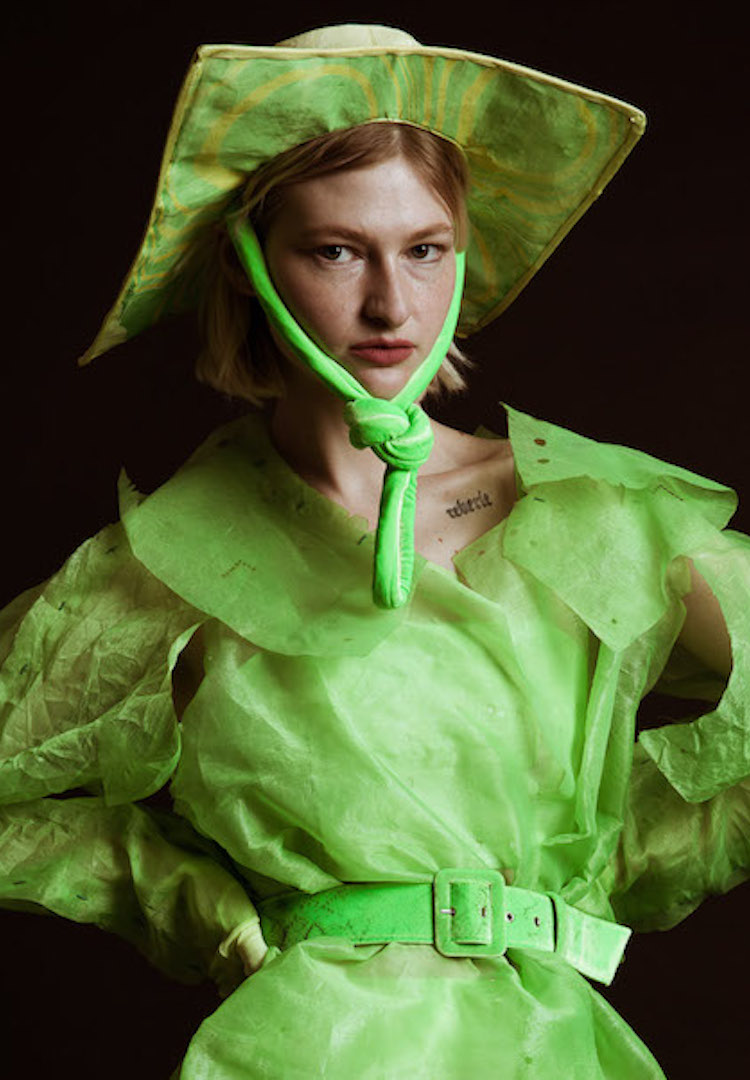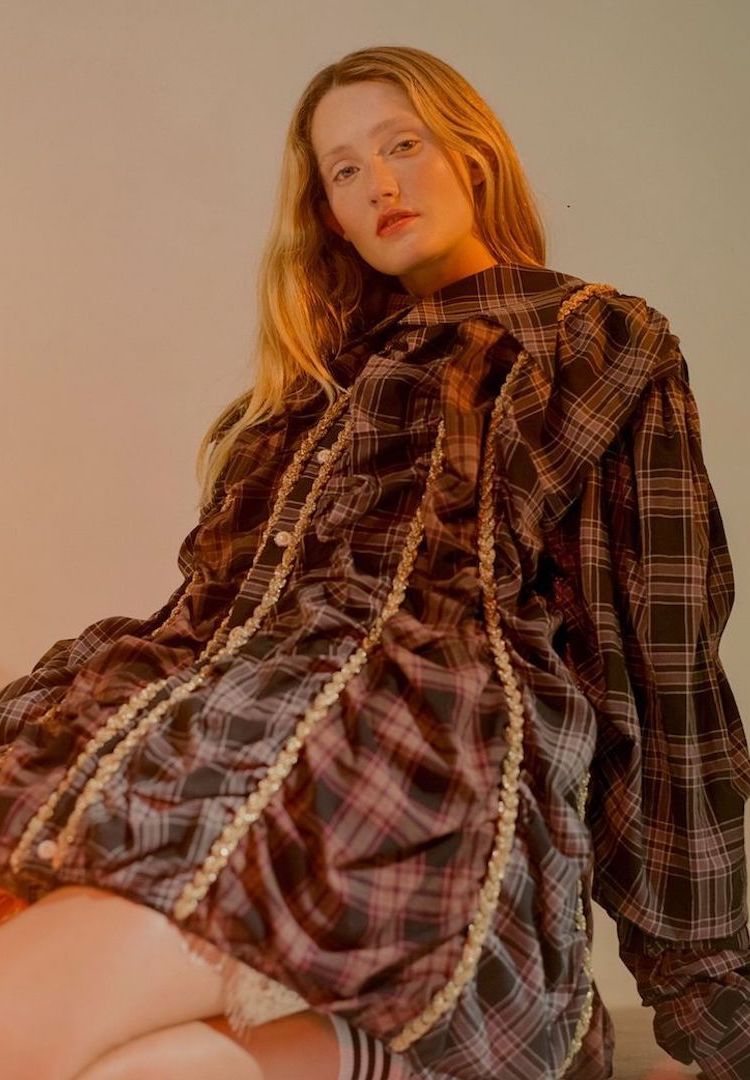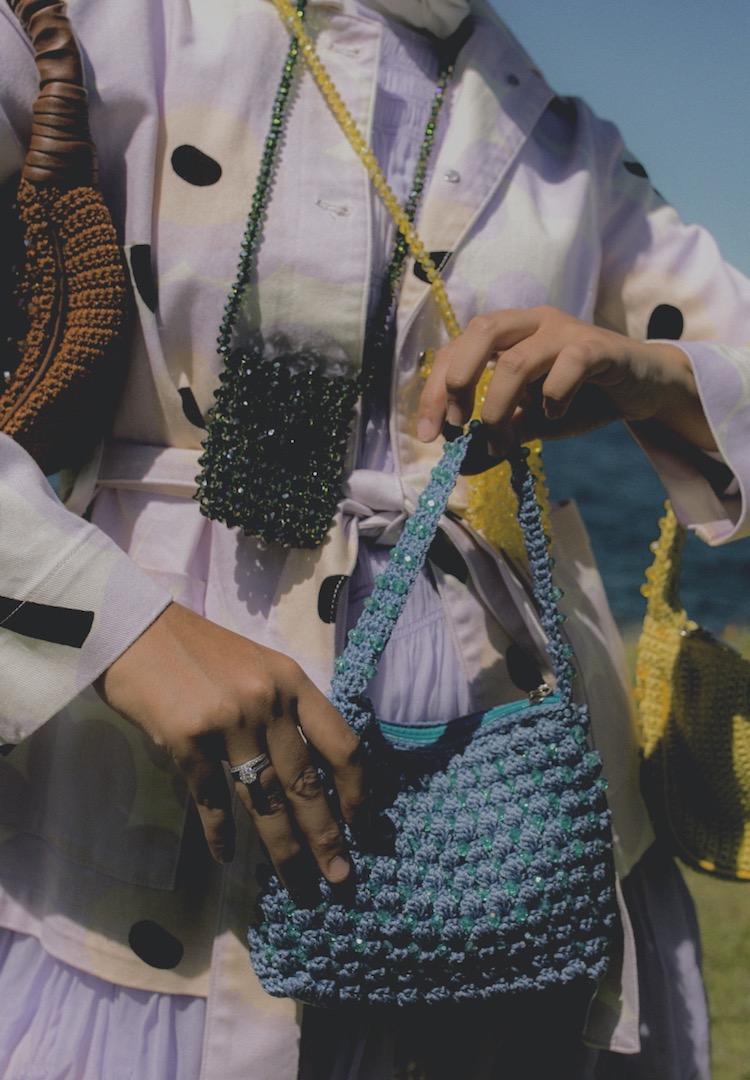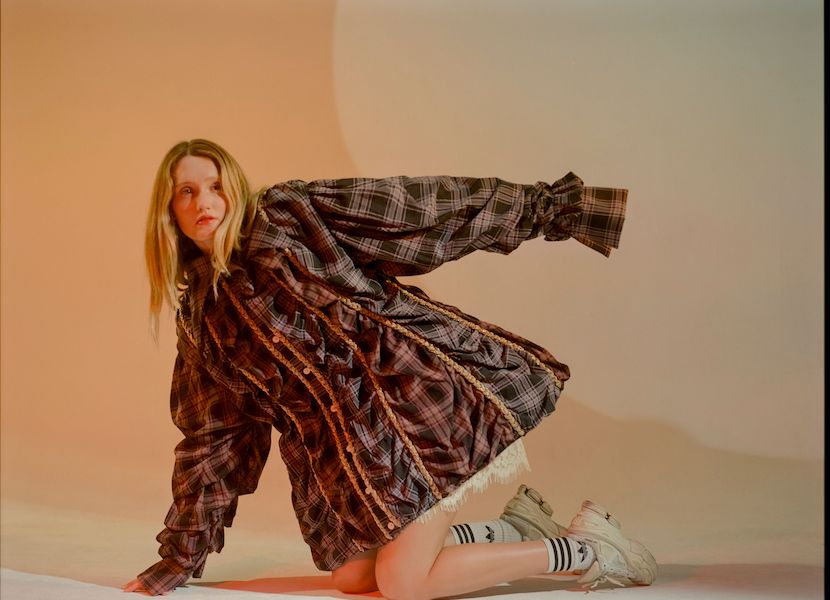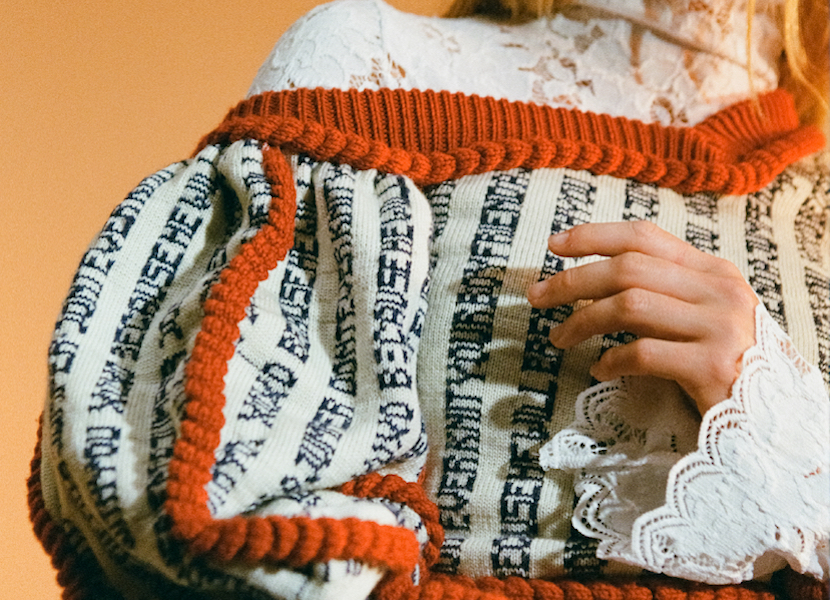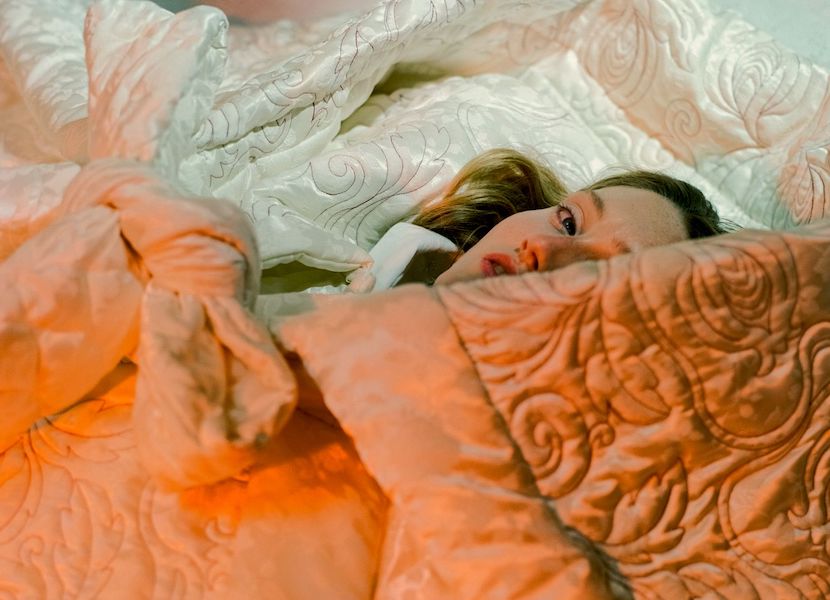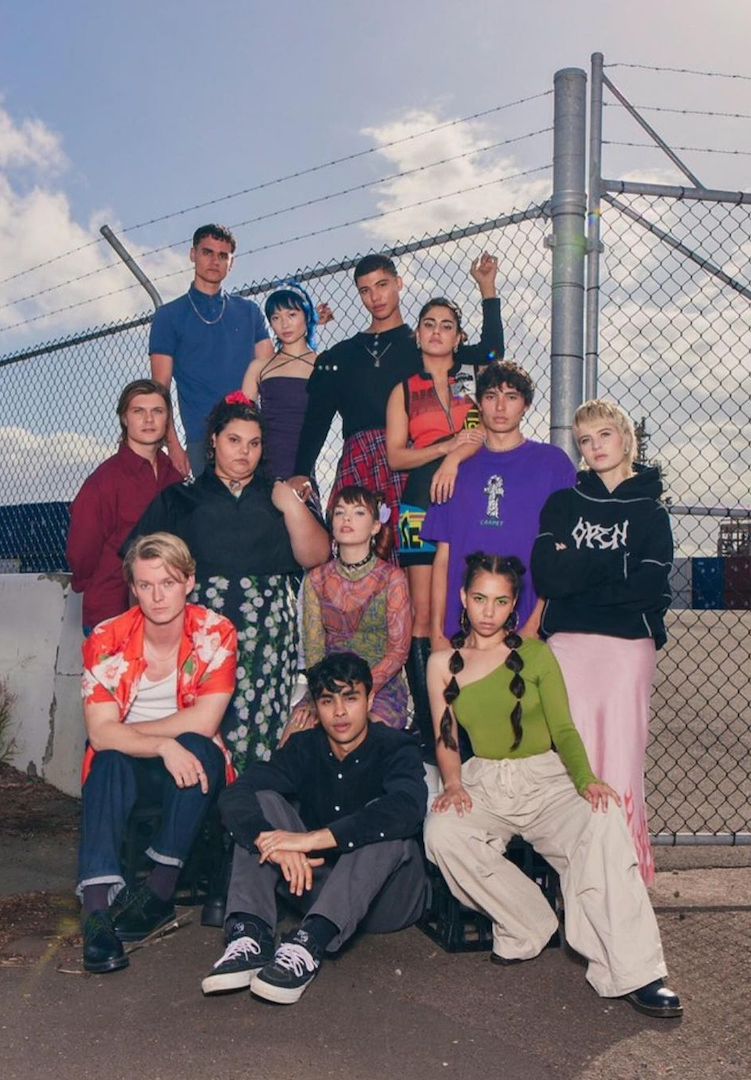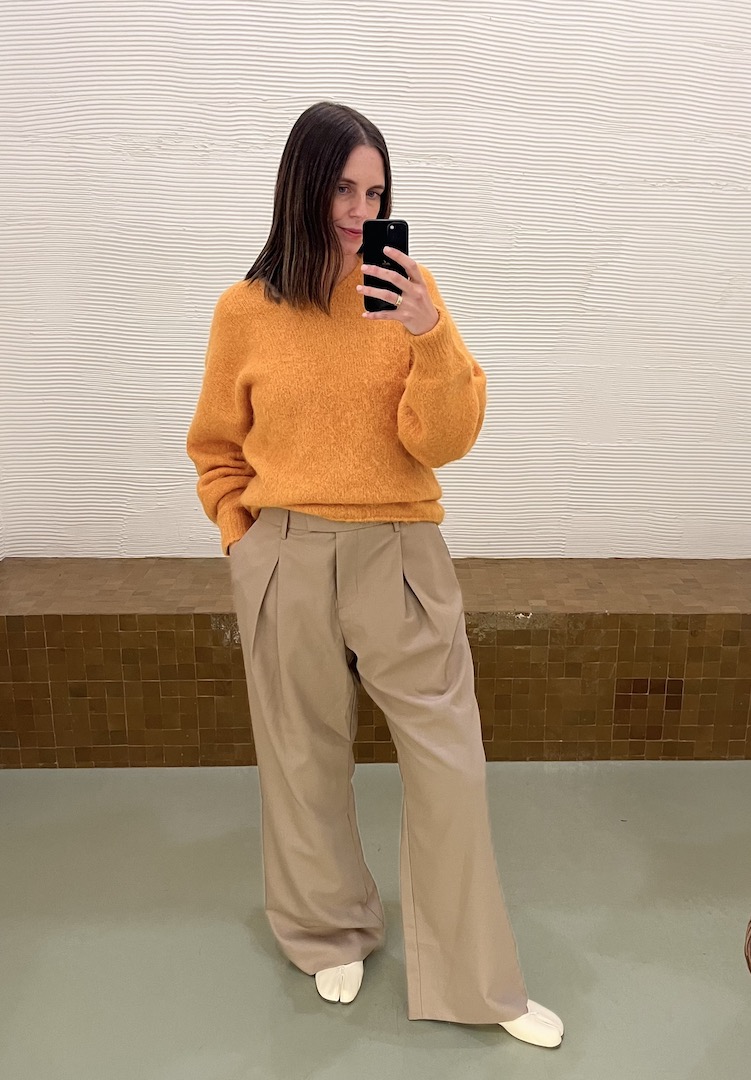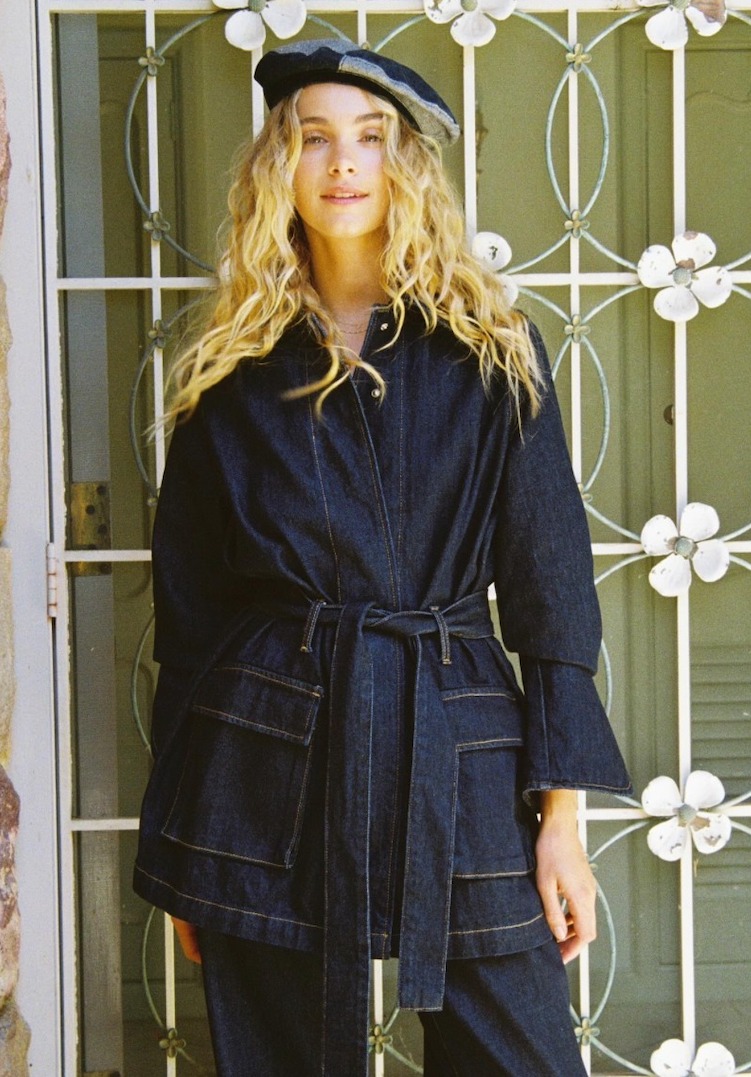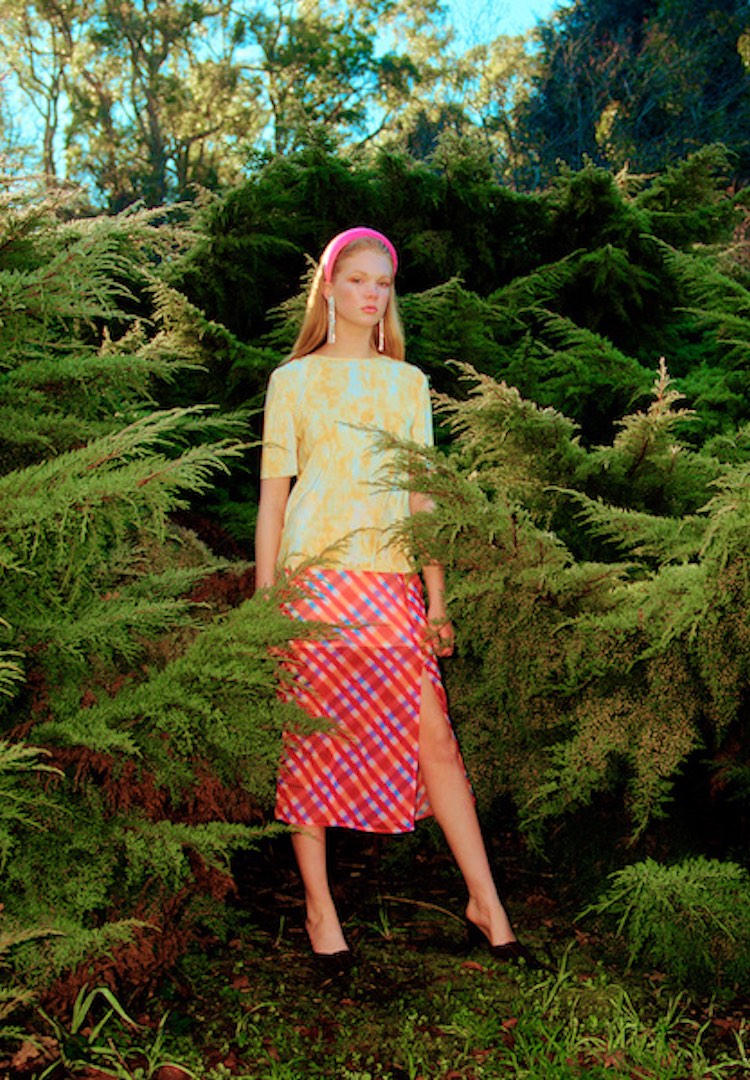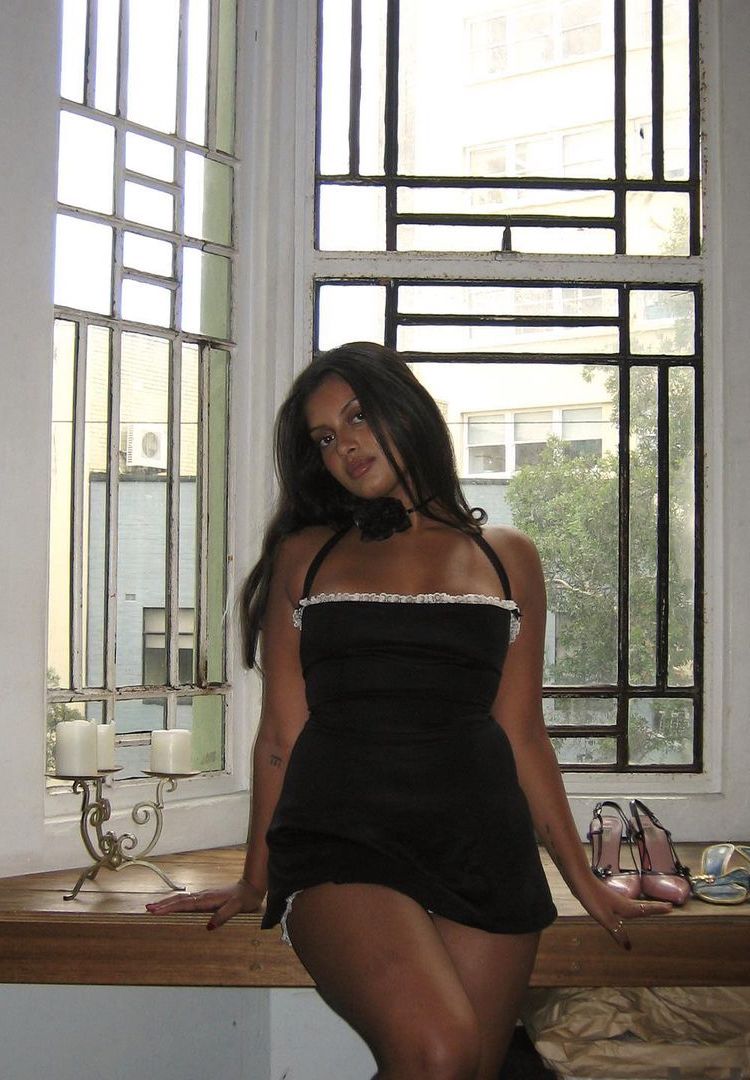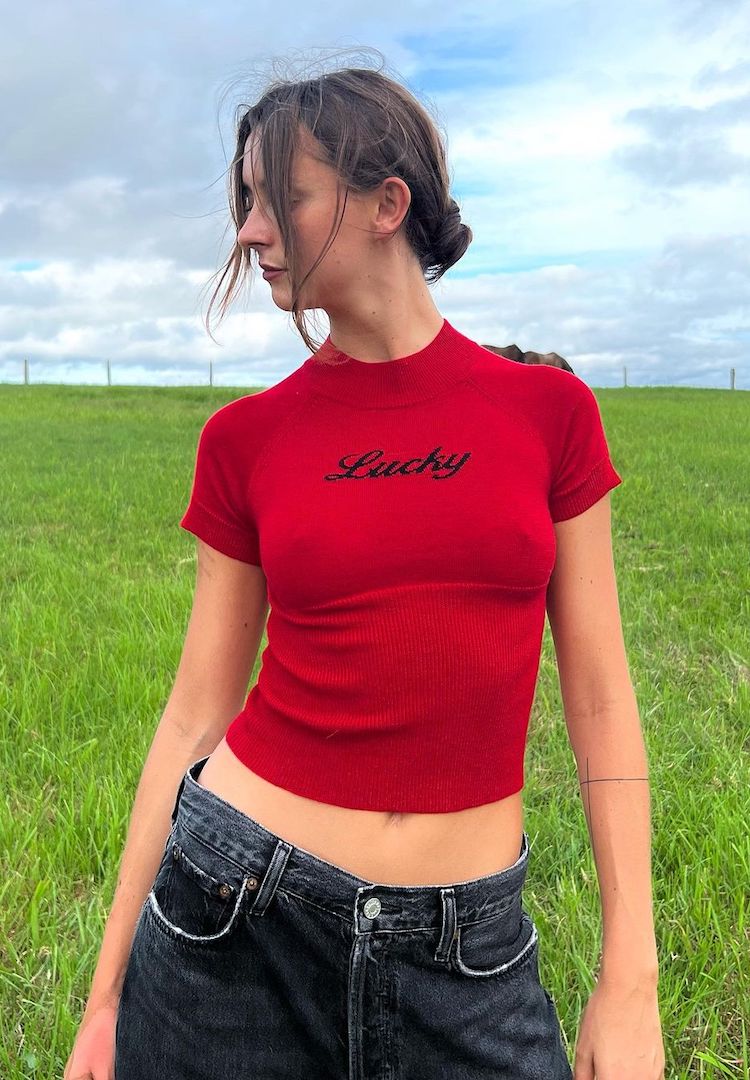Erin Novick’s graduate collection is an ode to the ‘more is more’ aesthetic
Photography by Natasha Killeen
Where regular meets spectacular
Fashion is the meeting point of retrospective inspiration and current innovation. This is what Erin Novick explores in her graduate collection — a stand-out depiction of mundanity and maximalism inspired by the new, the old, and the really old. It is this collection that marks the designer as a finalist in Melbourne Fashion Festival’s National Graduate Showcase.
Novick celebrates the art of dressing up, colliding fashion inspiration from the early-2000s, and the opulence of royal portraiture from the 1800s. She believes in creating playful, intricate designs with a sense of humour because fashion is nothing if it isn’t a little bit fun.
Please introduce yourself to our readers.
Hi, I’m Erin Novick. I am a Sydney-based designer and a recent graduate from UTS. I finished my honors collection in 2020, which was a massive feat and was a very interesting process. My design aesthetic is quite maximalist, but I also like to challenge ideas of gender and inclusivity. I’m definitely a textile-lead designer and prioritise interesting colour and texture combinations. The clothes that I make are quite gestural and off the body. More is definitely more — I always like to have a bit of a sense of humor with my clothes.
Tell us about your collection.
My graduate collection was born in isolation, so it draws a lot from the mundanity of domesticity and the nothingness that I was experiencing. I struggled to draw inspiration and just kind of wanted to dress up in crazy clothes and go out and do things and experience the world!
I was also watching a lot of early-2000s television and doing a lot of historical fashion research. So those binaries of ‘regular versus spectacular’ came through in this early-2000s family home life, and domesticity combined with the opulence, ridiculousness, over-the-top elements, and aesthetics of 1800s royalty.
When did you know you wanted to get into fashion and textile design?
I’ve always been interested in fashion and textiles. I learned to hand-knit when I was a really young child. I did design and technology at school and was really into that, and I did sewing lessons as a child. So, when I realised that it was an option for me to go to university and to study fashion, I was really excited about that. It’s definitely something I really love and I’m so happy that it’s part of my life.
What were the major points of inspiration for your graduate collection?
So, my sources of inspiration included early-2000s family life and the regular-ness of the fashion that people wore that maybe they didn’t necessarily consider to be fashion. Like cargo pants and graphic t-shirts that everyone wore, but now we look back at it, and we’re like, that’s kind of ridiculous, but at the time it was super normal.
1800s coronation portraits were also a massive inspiration for me and to see how these kings used to be adorned in these ridiculous, over-the-top coats with the layering, the silhouettes, and the textile combinations — I found it really interesting and the use of fabrics that were just so ridiculous.
View this post on Instagram
Tell us about the experience of putting together your graduate collection.
So obviously the last year and continuing into this year, there were a lot of challenges that presented themselves. I’m primarily a textile-led designer, so I tend to find my fabrics first or experiment with different textiles and techniques and then develop silhouettes from there. At one point, all the fabric stores were closed, online delivery was taking months from everywhere and it was a really big struggle to develop these ideas. It really pushed me creatively. I was draping with existing clothes that I had and stuffing old rolls of fabric to make interesting shapes and try to experiment. I’m also really lucky to have a knitting machine at home. I didn’t have to go into uni to use that facility, which I’m so thankful for. So that became a really massive part of my textile exploration — working with different knitting experimentations; using yarn that I had at home leftover from other things to push that technique and see where I could take it because there wasn’t really that much else I could do at the time.
Your designs inject your own sense of humour to add a playful element. How does this inspire your work as a designer?
I think fashion is very often seen as this high form of art when, in reality, it’s something that is just a part of everyday life. Like everyone wears clothes, makes fashion choices, whether intentional or unintentional. So, I think that it’s really important for fashion to be accessible. And that kind of comes with a sense of humor. It’s like people are in on the joke — you feel a part of the fashion system, which is also like the regular versus spectacular. That is the fashion system, as well.
Why maximalism over minimalism?
I just think it’s fun. Fashion should be fun and it should induce joy and it should be something that you enjoy. Personally, I use fashion to express myself and obviously, for a lot of people, that is a very common use for it. People use their clothing to tell the world what they want to tell, and wearing fun things makes me happy. That’s super important, I think.
What part does sustainability play in your design practice?
So, obviously, sustainability is very important at the moment and going forward in the fashion industry. I source a lot of dead stock and secondhand fabrics. I try to use natural fibers where I can. It’s difficult, but it’s kind of necessary in what we’re all doing at the moment.
What’s next for you?
I would love to continue to a Master’s degree in fashion or explore other avenues, like maybe specialise in knitwear. Yeah, that’s definitely something I’m interested in, but at the moment, I’m just trying to work and get my footing in the Australian fashion industry.
Find more of Erin’s work here.

